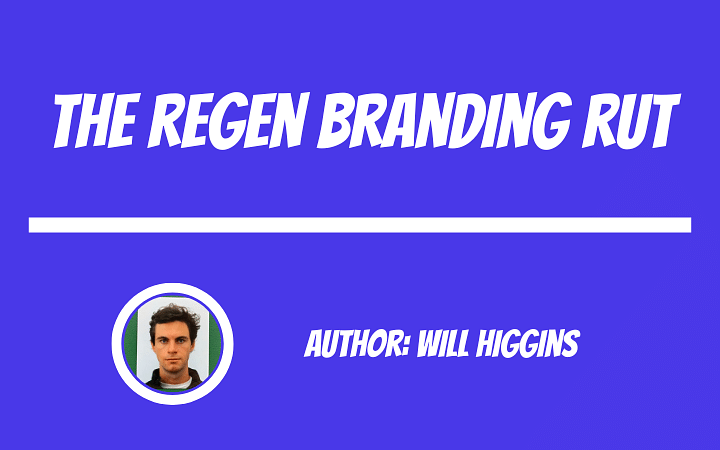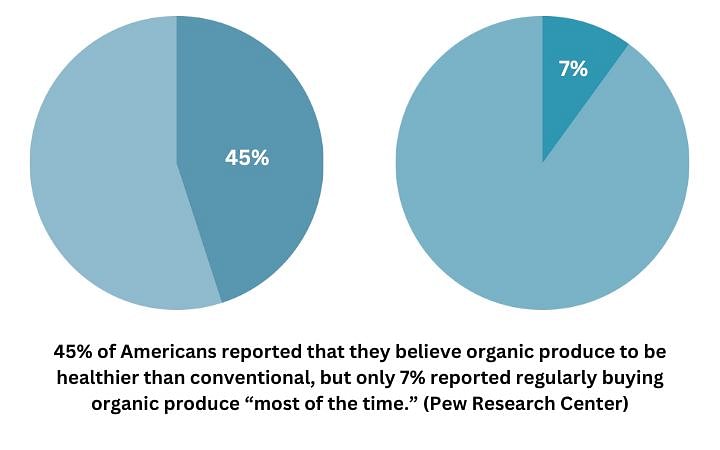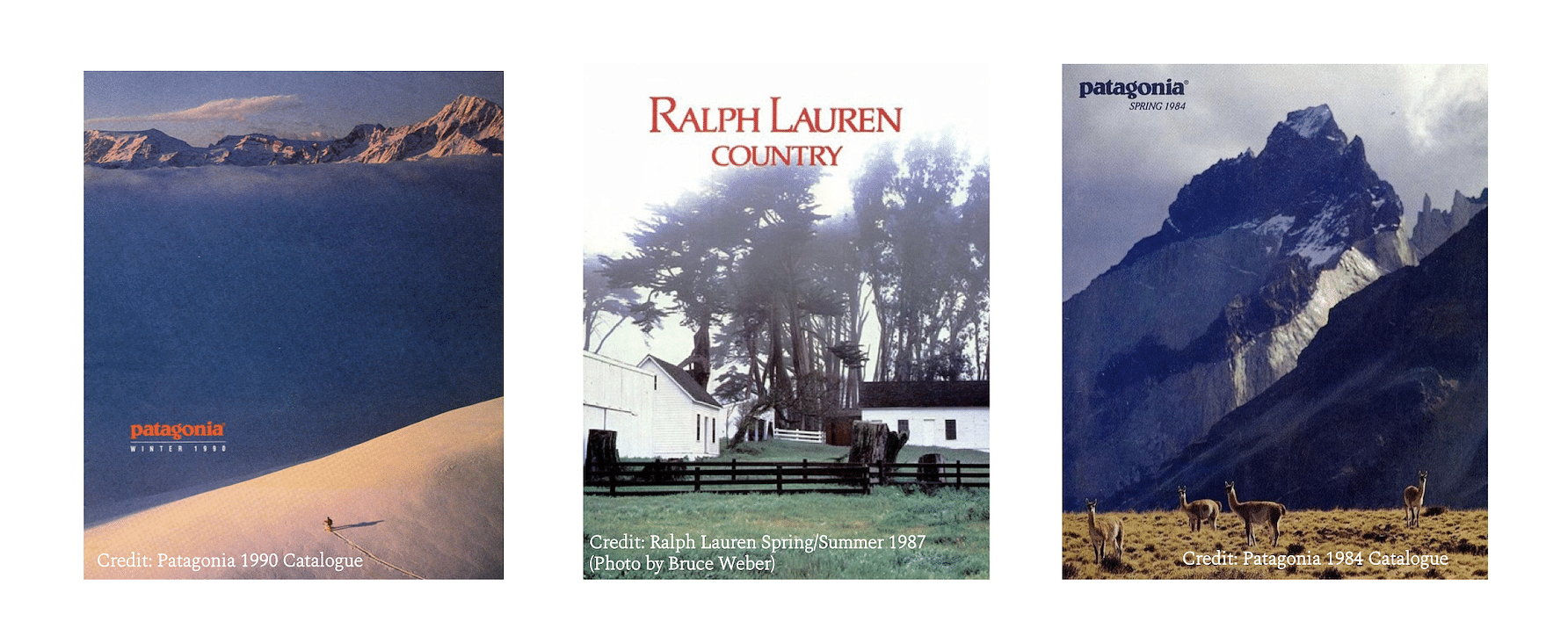
The Regen Branding Rut
Regenerative branding is in a rut. An unsexy rut, preaching only to the converted. Moving beyond the grassroots base, reaching an inflection point, and generating mass appeal requires regen brands to embrace a new, slower, and detail-oriented strategy to develop intimate, lasting relationships with consumers.
The Educator-Activist-Rebel Plateau
Spending the past year digging into the regen ag movement, I discovered the standard script for many regen brands. Their goal is to transition a grassroots business into the mainstream. Brands build their initial customer base through crowdfunding, subscriptions, pre-production discounts, or similar small-scale initiatives. Over time, the hope is to reach a tipping point where their expanding notoriety pulls the brand out of the regen space and into the main consumer market. As large and sustained investments are hard to come by for regen brands, the grassroots strategy (and the underdog sentiment that goes along with it) is practical and appealing. However, I have yet to see this strategy succeed.
A major hurdle to success is the market dynamics of the regen space. Anthony Corsaro pointed out to me earlier this year that brands are structurally inhibited from reaching a tipping point to mass appeal. In order to develop a genuine innovation or new brand, regen entrepreneurs must find a niche. Unfortunately, finding a small part of a small sector means that many brands plateau, even just within the regen marketplace, before they can reach a large audience.
Related to the difficult market dynamics, and I think more importantly, regen brands are held back by their tendency towards a very specific style of marketing. Most brands adopt a combination educator, activist, rebel strategy. They harp on the horrors of conventional farming and the imminent ecological collapse. Then, focusing on the health, climate change, or wider ecological benefits of regenerative methods, they show how their brand allows the consumer to participate in averting the doom scenario. In many instances, a rebellious narrative is embedded within the marketing; not only can consumers save the planet, but the consumer should stick it to the man — the government, big ag, and big food. Don’t trust what you’ve heard elsewhere, we found the real answer!
Psychic Numbing, Compassion Fatigue, and Emotional Opposition
The atrocities of conventional agriculture are real, as are the benefits of regenerative methods. However, marketing as educator-activist-rebels will only bring regen brands so far. Sure, the public audience that is concerned about climate change or biodiversity loss will seek out consumer options that align with their interests; however, those consumers represent a tiny fraction of the market.
This is especially true in the United States, where consumers appear unlikely to change their eating habits based on concern for the climate or even their health. In a recent Pew study, 45% of Americans reported that they believe organic produce to be healthier than conventional, but only 7% reported regularly buying organic produce “most of the time.” The study indicates the difficulty of changing consumer habits even among the population who believes in the detriments of conventional agriculture.

In a 2022 study from The Conference Board on US consumers’ readiness to change habits due to climate and environmental concerns, making changes to one’s diet was the least reported option — a finding supported by a 2021 Ipsos study where only 19% (down from 43% in 2019) of consumers reported buying “sustainable food most of the time.” These findings provide a contextual base for another recent study showing that even when products with sustainable branding perform well, there is no proof that the sustainability claims are contributing to the product’s success.
Worse, alongside the opaque success of sustainability-driven marketing, too much activism can lead to unintended pushback, a sentiment especially true among consumers who are climate change skeptics (about 30% of Americans). Similarly, research into public responses to humanitarian disasters found that humans suffer from “Psychic Numbing” — the larger the disaster the less sympathy individuals feel for the situation. Research also demonstrated that people are susceptible to “compassion fatigue,” losing the ability to empathize for others over time. The impacts of these numbing and fatigue phenomena are often compounded by a feeling of inefficacy — that even if an issue resonated with an individual, they may not have an outlet to help or feel that the solutions being offered will not make a meaningful difference.
Regen brands must consider the human limits of empathy and compassion because the underlying issues these brands aim to solve exist at a scale that is likely beyond an individual’s capacity to truly comprehend. On landscape degradation alone, the statistics are overwhelming: 40% of the world’s land is degraded — impacting 3.2 billion people, 50% of global GDP (100 Trillion USD). This is before digging into soil health, where soil-nerds take measurements by hectares and teaspoons and discuss mythical-sounding microbes by the billion.
If a marketing strategy begins with an onslaught of statistics and trying to explain systems theory, regen brands are likely losing engagement from a majority of the market right from the start.
Solution: Slow, Intimate Marketing
The issues of conventional agriculture are immense. Ringing the alarm bell to avoid total ecological collapse has a place in the overall regenerative movement. However, pivoting to marketing strategies that embrace the natural beauty and narratives of the regen movement will sustainably develop a mass consumer base over the long term.
Overcoming the challenges presented by market dynamics, psychic numbing, and compassion fatigue requires pivoting away from the educator-activist-rebel strategy. Instead, regenerative agriculture and brands are especially well poised for a narrative style of marketing often termed “slow marketing.” In contrast to contemporary media strategies that seek to generate sudden hype1, a slow and narrative marketing strategy will convey the brand identity consistently over the long-term — in line with the ethos of regenerative agriculture to build cycles of positive change for the long run.
To play the long game, regen brands should equate their marketing strategies to building an intimate relationship with the consumer. How can they regularly develop trust and generate allure? Trust can be created through proximity. Consistently showing who is behind the brand, what role they play, and why they are involved will build trust. Cultivating allure will depend on how those moments of increased proximity are presented — seek beauty, highlight details, and tell a story.
Slow, narrative engagement plays directly into the best attributes of the regenerative movement. Regen brands often work with producers who live in beautiful, dramatic, and natural settings that have an attractive value on their own. The daily tasks of the farmers and entrepreneurs involved are often physical, lending a tangibility to the stories regen brands wish to tell. Many regen methods require paying close attention to the land; without getting technical, brands can focus on the details of what it means for producers to develop a relationship with their land, their livestock, and their communities.
Successful narratives should be consistent and subtle. Allow the diligence and love for the land that regenerative methods require to speak for themselves. Maybe not every video requires an explanatory audio. Include adjacent narratives — a photo of your kitchen, a production line after everyone has left, the smile of a friend. It’s an old adage of writing, “show, don’t tell.” The same principle applies here. The best way to set a tone for a brand is not by telling people, but by providing something emotive that makes them feel it on their own. The pinnacle of this method was the 1980s and 1990s Ralph Lauren and Patagonia advertisements that often did not feature any products for sale, only photos to set the mood.

Slow Down & Play the Long Game
The natural beauty and narratives behind regen brands are their greatest assets. The opportunity to take a step back from the day and enjoy something for its beauty is increasingly rare in most of society. On farms, regenerative methods force us to slow down, examine the details, and build meaningful relationships.
Among consumer brands, the same approach should apply. While the details of climate change, biodiversity loss, and soil degradation make surmounting these challenges a pressing matter, it is worth the time of regenerative brands to focus on the details and present their narratives in a curated, beautiful way. Making regenerative agriculture and brands mainstream is the long-term solution to improving our ecology. Slow, narrative marketing that cultivates intimacy is the detail-oriented approach that will allow the regen movement to accomplish its macro goals.
Other Slow Marketing Examples
|
||
|
Wildfarmed is a regenerative brand using some elements of the narrative marketing strategy I outlined, for example this video. |
||
Footnotes:
1 Consider that a branding approach that presents negative statistics of conventional agriculture contrasted against the positive impacts of regen methods relies on a shock factor to initiate conversion. This is a good approach for making a TikTok go viral, but how many consumers will truly become loyal to a brand through this strategy? While we all would like the necessary changes to our food and ag systems to occur overnight, the long game is the real answer.
Hi, I’m Will Higgins 👋. I'm a Paris-based writer and researcher passionate about how links between agriculture and hospitality can drive positive change in our food system. To keep the conversation going, shoot me an email or drop me a line on Instagram, where you can see more examples of slow narratives in practice.
Editor's Note: The views expressed in this article are the author's alone and do not necessarily represent those of the ReGen Brands platform or team.
